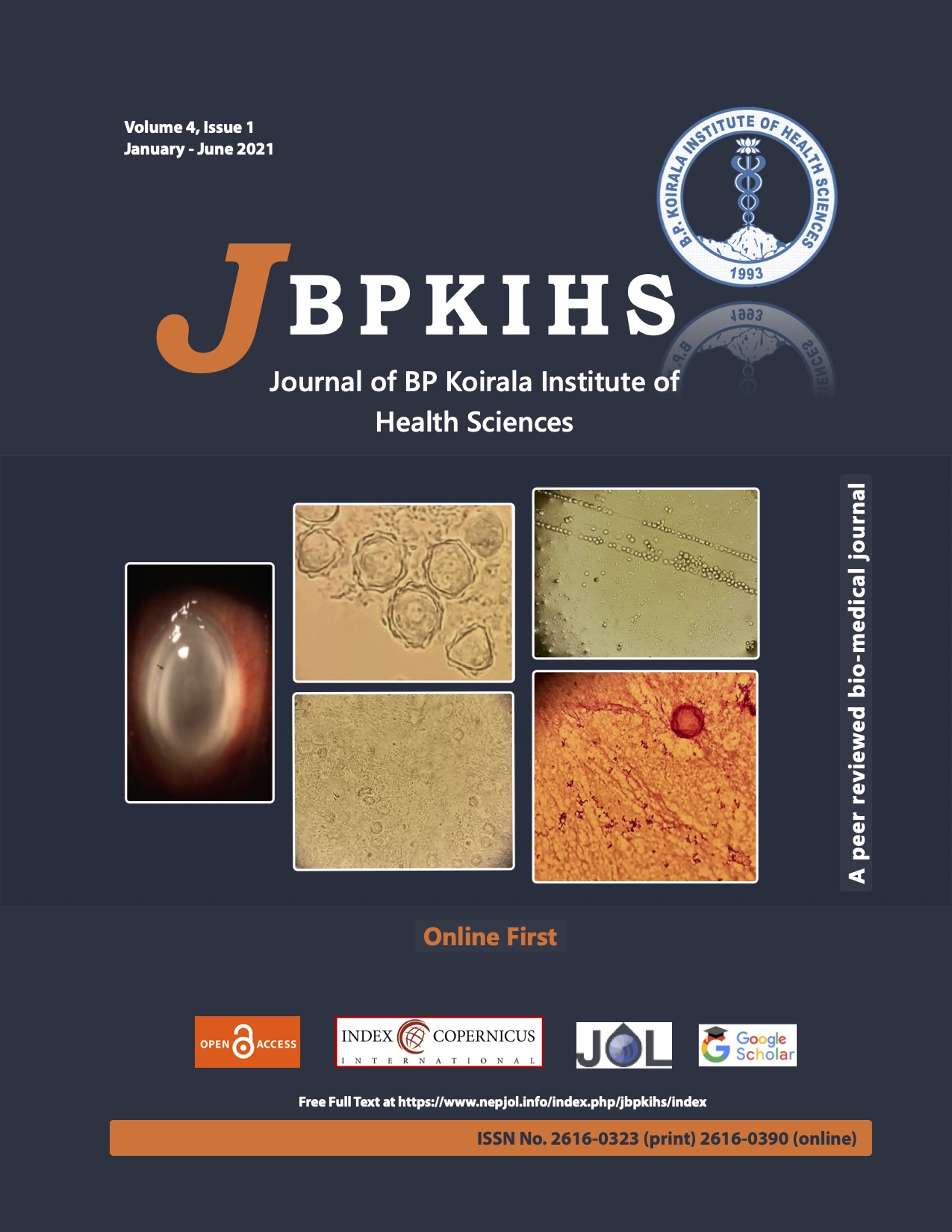Role of NT-proBNP in Detection of Left Ventricular Diastolic Dysfunction in Asymptomatic Type 2 Diabetes Patients with Preserved Ejection Fraction: A Cross-sectional Study
DOI:
https://doi.org/10.3126/jbpkihs.v4i1.33227Keywords:
Left ventricular diastolic dysfunction (LVDD), NT-proBNP, Tissue Doppler Imaging (TDI)Abstract
Background: Left ventricular diastolic dysfunction (LVDD) represents the first stage of diabetic cardiomyopathy and is initially subclinical. Early diagnosis enables earlier treatment and stops further progression of the disease. Tissue Doppler Imaging (TDI) is a new diagnostic modality with high sensitivity and specificity to know ventricular diastolic function. N-terminal pro brain natriuretic peptide (NT-proBNP) is a cardiac neurohormone that can be used to identify the changes in ventricular diastolic function. We aimed to estimate the concentration of NT-proBNP and correlate its value with TDI for LVDD in asymptomatic type 2 Diabetes Mellitus.
Methods: In this comparative cross-sectional study, we enrolled 100 asymptomatic type 2 diabetic patients and 100 healthy people aged 30-60 years. In both groups, NT-proBNP levels were measured and the presence of LVDD was determined by TDI. The primary outcome parameter was the level of NT-proBNP in diabetics and healthy people. The secondary outcome parameter was the correlation of NT-proBNP level with various grades of LVDD.
Results: In patients with LVDD, NT-proBNP levels [median (IQR)] were 123 (102,194) pg/ml in diabetics and 72 (67, 77) pg/ml in the control group. In patients without LVDD, NT-proBNP levels [median (IQR)] were 69 (59, 76) pg/ml in diabetics and 57 (49, 63) pg/ml in the control group. The level of NT-proBNP was significantly higher in those with LVDD (p < 0.001). NT-proBNP concentration significantly increased as grades of LVDD increased.
Conclusion: NT-proBNP is a good marker for detection of preclinical LVDD in patients with uncontrolled diabetes prone to develop cardiovascular complications.
Downloads
Downloads
Published
How to Cite
Issue
Section
License
This license enables reusers to copy and distribute the material in any medium or format in unadapted form only, for noncommercial purposes only, and only so long as attribution is given to the creator.




